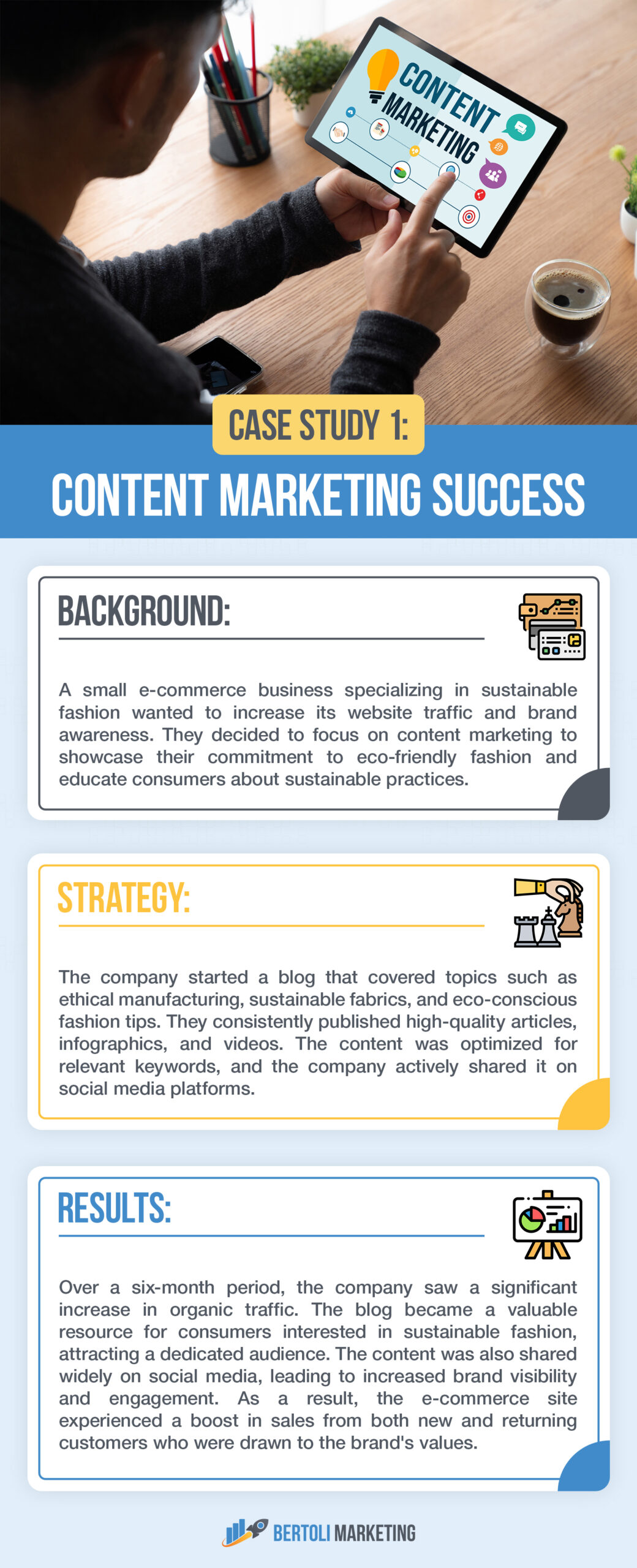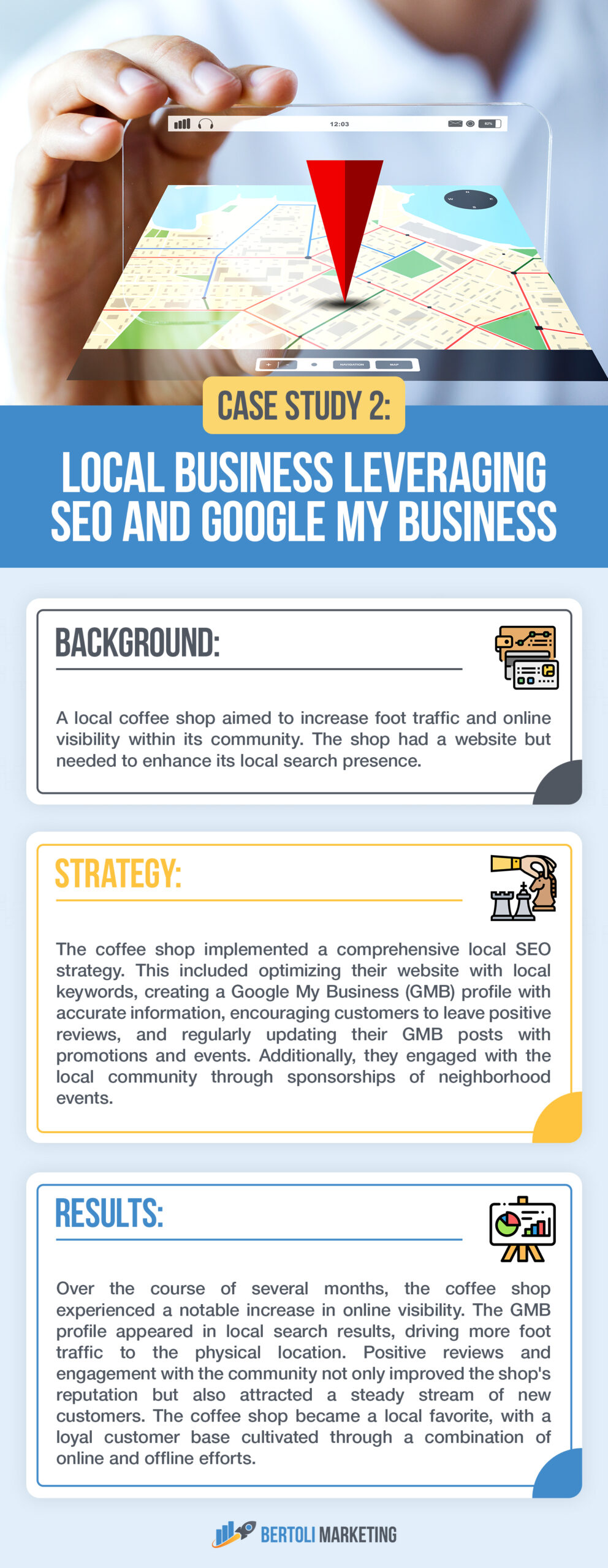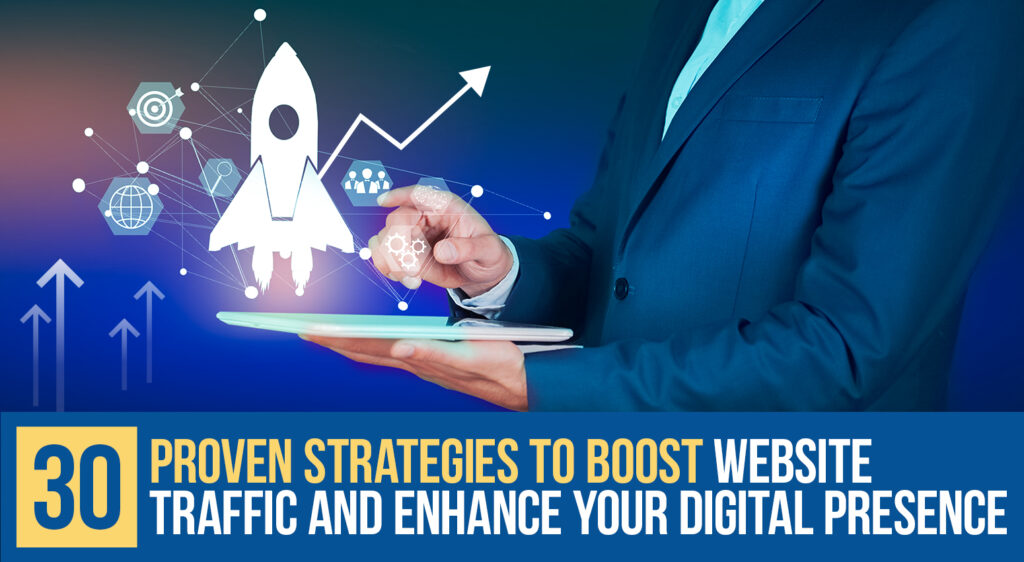In the digital age, having a strong online presence is crucial for the success of any business or individual. One key metric that reflects this presence is website traffic. Increased traffic not only enhances visibility but also provides opportunities for engagement, lead generation, and conversions. In this article, we’ll explore proven strategies to boost website traffic and drive sustained growth.
- Search Engine Optimization (SEO): Optimizing your website for search engines is fundamental to increasing organic traffic. This involves using relevant keywords, creating quality content, and ensuring your site is technically sound. Regularly update and refresh your content, as search engines favor fresh and relevant information.
- Content Marketing: Develop a comprehensive content marketing strategy to attract and engage your target audience. High-quality, informative, and shareable content not only improves your website’s search engine ranking but also encourages users to return and explore more.
- Social Media Marketing: Leverage the power of social media platforms to drive traffic to your website. Share your content across various social channels, engage with your audience, and use social media advertising to target specific demographics. Platforms like Facebook, Twitter, Instagram, and LinkedIn are powerful tools for increasing visibility and driving traffic.
- Email Marketing: Build and maintain an email subscriber list. Regularly sending newsletters, updates, and exclusive content to your subscribers can drive consistent traffic to your website. Use compelling subject lines and provide valuable content to encourage recipients to click through.
- Influencer Marketing: Collaborate with influencers in your industry or niche to tap into their audience. Influencers already have a dedicated following, and their endorsement can significantly increase your website traffic. Ensure the influencers align with your brand and target audience for the best results.
- Guest Blogging: Contribute articles to reputable websites within your industry. This not only helps build backlinks to your site, improving SEO, but also introduces your brand to a new audience. Include a compelling author bio with a link back to your website to drive traffic.
- Optimize Website Speed and Performance: A slow-loading website can drive visitors away. Optimize your site’s performance by compressing images, using browser caching, and minimizing HTTP requests. A faster website not only improves the user experience but also positively impacts search engine rankings.
- Responsive Design: Ensure your website is mobile-friendly, as an increasing number of users access the internet through mobile devices. Google prioritizes mobile-friendly websites in search results, and a responsive design enhances the overall user experience.
- Run Online Contests and Giveaways: Engage your audience by organizing contests and giveaways. Encourage participants to share your website or content on social media platforms to enter. This not only increases visibility but also introduces your brand to a wider audience.
- Analytical Tools and Data: Regularly monitor your website’s performance using analytical tools such as Google Analytics. Analyzing user behavior, traffic sources, and popular content can help you make informed decisions to further optimize your strategies and enhance traffic.
- Utilize Video Content: Video has become a dominant form of online content consumption. Create engaging and informative videos related to your industry or niche. Host them on platforms like YouTube and embed them on your website. Videos can increase user engagement, dwell time, and overall appeal.
- Collaborate with Other Websites: Build partnerships with other websites in your industry or complementary niches. This can include co-authoring content, cross-promoting each other, or participating in joint ventures. Such collaborations can expose your website to new audiences and drive traffic from partner sites.
- Implement Long-Tail Keywords: While optimizing for common keywords is essential, don’t overlook the power of long-tail keywords. These are more specific and often have lower competition. Tailoring your content to address niche queries can attract a targeted audience interested in your specific offerings.
- Create a Resourceful Blog: Establish your website as a go-to resource by maintaining an informative and resourceful blog. Regularly publish well-researched, in-depth articles that provide value to your audience. This not only positions your site as an authority but also attracts organic traffic seeking valuable information.
- Utilize Online Advertising: Invest in online advertising through platforms like Google Ads or social media ads. Pay-per-click (PPC) campaigns can help you target specific demographics and drive immediate traffic to your website. Ensure your ad campaigns are well-targeted and aligned with your overall marketing strategy.
- Implement Schema Markup: Enhance your website’s appearance in search results by implementing schema markup. This structured data helps search engines understand the content on your pages, leading to rich snippets in search results. Rich snippets can increase click-through rates and improve your website’s visibility.
- Encourage User-generated Content: Foster a sense of community around your brand by encouraging user-generated content. This can include customer reviews, testimonials, and user-submitted content. User-generated content not only builds trust but can also lead to increased social shares and website traffic.
- Repurpose Content: Maximize the value of your existing content by repurposing it into different formats. For example, turn blog posts into podcasts, infographics, or video content. This not only caters to different audience preferences but also allows you to reach new audiences on various platforms.
- Leverage Online Communities: Engage with online communities and forums related to your industry. Contribute valuable insights, answer questions, and subtly promote your website when relevant. Building a presence in these communities can establish you as an authority and drive targeted traffic to your site.
- Regularly Update and Optimize: The digital landscape is ever-evolving, and so should your strategies. Regularly revisit and update your content, ensuring it remains relevant and valuable. Stay informed about industry trends, algorithm changes, and emerging technologies to adapt your approach and maintain sustained growth.
- Implement Social Proof: Showcase testimonials, reviews, and social proof on your website. Positive feedback from satisfied customers builds trust and credibility, encouraging new visitors to explore your offerings. Consider featuring customer success stories or case studies to demonstrate real-world examples of your products or services.
- Optimize for Local Search: If your business caters to a local audience, ensure it’s optimized for local search. Create a Google My Business profile, include accurate business information, and encourage customers to leave reviews. Local optimization can significantly increase your visibility in location-based searches.
- Host Webinars and Live Events: Organize webinars or live events to share your expertise, connect with your audience, and drive traffic. Promote these events on your website and through social media channels. Webinars provide a valuable interactive experience and can attract a diverse audience interested in your industry.
- Implement a Referral Program: Encourage your existing audience to refer others to your website through a referral program. Offer incentives, discounts, or exclusive access to content for those who refer new visitors. This not only boosts your traffic but also leverages the power of word-of-mouth marketing.
- Leverage Quora and Online Forums: Participate in relevant discussions on platforms like Quora and niche-specific forums. Answer questions thoughtfully and provide helpful insights, including links to relevant content on your website. This not only establishes your authority but also attracts users interested in exploring more on your site.
- Monitor and Optimize Conversion Rates: Increasing traffic is essential, but optimizing for conversions is equally important. Analyze user behavior on your site, identify points of friction, and optimize your website’s design and calls-to-action to enhance the conversion rate. A high-converting website ensures that the increased traffic leads to tangible results.
- Utilize Retargeting Campaigns: Implement retargeting ads to reach visitors who have previously interacted with your website. This keeps your brand in front of potential customers, reminding them to revisit and engage. Retargeting can be particularly effective in converting users who may not have taken action during their initial visit.
- Stay Active in Industry News and Trends: Stay informed about industry news, trends, and emerging technologies. Creating content related to the latest developments in your field positions your website as a valuable resource. This not only attracts a knowledgeable audience but also helps your content stay relevant and up-to-date.
- Optimize for Voice Search: With the rise of voice-activated devices, optimizing your content for voice search is becoming increasingly important. Focus on natural language and conversational keywords to align with the way people speak when using voice search. This can improve your chances of appearing in voice search results.
- Engage with Online Communities: Actively participate in online communities and discussions related to your niche. Engage with your target audience on platforms like Reddit, LinkedIn groups, or industry-specific forums. Establishing a genuine presence in these communities can lead to organic traffic as users become familiar with your expertise and content.
Case Study 1: Content Marketing Success
Background: A small e-commerce business specializing in sustainable fashion wanted to increase its website traffic and brand awareness. They decided to focus on content marketing to showcase their commitment to eco-friendly fashion and educate consumers about sustainable practices.
Strategy: The company started a blog that covered topics such as ethical manufacturing, sustainable fabrics, and eco-conscious fashion tips. They consistently published high-quality articles, infographics, and videos. The content was optimized for relevant keywords, and the company actively shared it on social media platforms.
Results: Over a six-month period, the company saw a significant increase in organic traffic. The blog became a valuable resource for consumers interested in sustainable fashion, attracting a dedicated audience. The content was also shared widely on social media, leading to increased brand visibility and engagement. As a result, the e-commerce site experienced a boost in sales from both new and returning customers who were drawn to the brand’s values.

Case Study 2: Local Business Leveraging SEO and Google My Business
Background: A local coffee shop aimed to increase foot traffic and online visibility within its community. The shop had a website but needed to enhance its local search presence.
Strategy: The coffee shop implemented a comprehensive local SEO strategy. This included optimizing their website with local keywords, creating a Google My Business (GMB) profile with accurate information, encouraging customers to leave positive reviews, and regularly updating their GMB posts with promotions and events. Additionally, they engaged with the local community through sponsorships of neighborhood events.
Results: Over the course of several months, the coffee shop experienced a notable increase in online visibility. The GMB profile appeared in local search results, driving more foot traffic to the physical location. Positive reviews and engagement with the community not only improved the shop’s reputation but also attracted a steady stream of new customers. The coffee shop became a local favorite, with a loyal customer base cultivated through a combination of online and offline efforts.

Case Study 3: Tech Startup Leveraging Webinars for Thought Leadership
Background: A startup in the artificial intelligence (AI) sector aimed to establish itself as a thought leader and attract potential clients and partners. The company decided to use webinars as a tool for knowledge sharing and engagement.
Strategy: The startup organized a series of webinars featuring industry experts and in-house specialists discussing various aspects of AI. They promoted the webinars through email campaigns, social media, and collaborations with industry associations. Registration for the webinars required participants to provide their email addresses, allowing the company to build a targeted email list.
Results: The webinars not only attracted a substantial live audience but also generated on-demand views as the recorded sessions were made available on the company’s website. The startup saw a notable increase in website traffic, with participants exploring other sections of the site. The email list gathered during the registration process became a valuable asset for future marketing efforts. Additionally, the thought leadership established through the webinars enhanced the company’s reputation within the AI community.

Case Study 4: Social Media Engagement and Conversion
Background: A fitness app aimed at a younger demographic wanted to increase downloads and user engagement. The company decided to leverage social media marketing to reach its target audience.
Strategy: The fitness app created visually appealing and shareable content, including workout videos, motivational quotes, and user success stories. They actively engaged with their audience on platforms like Instagram and TikTok, responding to comments and encouraging users to share their fitness journey using the app. Additionally, the company ran targeted ads on social media to promote app downloads.
Results: The social media strategy led to a significant increase in the app’s visibility and downloads. User-generated content, such as before-and-after photos and testimonials, became a powerful tool in attracting new users. The engagement on social media platforms helped build a community around the app, with users sharing their experiences and recommending it to their followers. The combination of organic engagement and targeted advertising resulted in a substantial increase in active users and overall app retention rates.
Case Study 5: E-commerce Brand Harnessing Influencer Marketing
Background: An e-commerce brand selling handmade skincare products aimed to expand its customer base and drive online sales. They decided to leverage influencer marketing to tap into new audiences.
Strategy: The brand identified influencers in the beauty and skincare niche whose values aligned with their natural and cruelty-free product offerings. They sent their products to influencers for reviews and collaborations, encouraging them to share their experiences on social media. The brand also provided unique discount codes for influencers to share with their followers, creating a sense of exclusivity.
Results: The influencer marketing campaign resulted in a significant boost in website traffic and sales. Influencers’ reviews and recommendations reached their dedicated followers, driving a surge in product inquiries and purchases. The use of discount codes allowed the brand to track the effectiveness of each influencer’s promotion. As a result, the e-commerce brand not only increased its customer base but also strengthened its online presence within the beauty and skincare community.
Case Study 6: Nonprofit Organization Boosting Online Presence with Social Media Campaign
Background: A nonprofit organization focused on environmental conservation aimed to increase awareness, attract donors, and drive engagement. They decided to harness the power of a social media campaign to reach a wider audience.
Strategy: The nonprofit launched a social media campaign centered around a specific environmental cause. They created visually appealing content, including infographics, videos, and success stories, and used relevant hashtags to increase visibility. The campaign encouraged users to share their commitment to the cause, tagging the organization. Additionally, the nonprofit collaborated with influencers in the environmental and sustainability niche to broaden the campaign’s reach.
Results: The social media campaign generated significant traction, with users sharing campaign-related content across various platforms. The hashtag associated with the campaign trended, further amplifying the organization’s visibility. The nonprofit’s website experienced a surge in traffic as curious users explored more about the cause, leading to increased donations and volunteer sign-ups. The collaboration with influencers added authenticity and credibility to the campaign, helping the nonprofit achieve its awareness and engagement goals.
Increasing website traffic requires a multifaceted approach that combines technical optimization, engaging content, and strategic promotion. By implementing these proven strategies, you can not only boost your website traffic but also create a sustainable online presence that attracts and retains a loyal audience. Regularly evaluate and adapt your strategies to stay ahead in the dynamic digital landscape.




